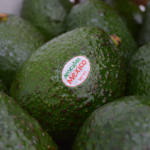Half of Jalisco’s avocado exports now go to the U.S.

On June 28, 2022, avocados from Jalisco entered the U.S. market for the first time, 29 years after the North American Free Trade Agreement (NAFTA) opened the doors for Mexico, the world's biggest producer of avocados, to import the fruit into the U.S.
“Before entering the U.S. market, following the update of the work plan for the importation of hass avocados between the United States and Mexico in Dec. 2021, Jalisco exported to three main markets,” said Armando Garcia Angulo, Managing Director of the Jalisco Avocado Exporting Producers Association, A.C. APEAJAL during a conversation with FreshFruitPortal.com at the Macfruit trade event that took place in Italy last week.
“Europe accounted for about 30% of our fruit, Japan 31% and Canada with 33%, totaling around 115,000 tons of avocados divided among the three countries,” said Garcia.
However, Garcia noted that with the opening of the U.S. market, 50% of total exports are now destined for the U.S., with Canada and Japan going down to around 19%, while European exports have reduced drastically to around 8%.
“European exports decreased because of logistical issues with the pandemic, both in terms of time and costs. In some cases, this affected the quality of the arriving fruit, reducing costs, which is why Jalisco exporters have decided to allocate more of their fruit to the U.S. because there is less risk involved,” said Garcia.
For the U.S. market, the fruit travels for less than 24 hours, while the European market transit can take up to 25 days.
Per capita consumption of avocado in the U.S. is double that of Europe.
The importance of attending Macfrut 2023
“We come to this agro- trade fair with two objectives: first we want to know what is the market for avocados in Italy, who the exporters are and how much avocado is consumed, and at what price. We are also, however, looking for potential clients for Jalisco avocados,” said Garcia.
Garcia sees an opportunity for Mexican avocados at the end of the year, because even though the European market is dominated by Peru, their volumes are not as high between October and January.
The other big challenge for imports to Europe are the amount of restrictions and permits required by authorities. Therefore, the U.S. market is easier to deal with for exporters.
Jalisco avocados in the U.S.
According to Garcia, there is still a huge potential market for Mexican avocados in the U.S.
Avocados from Jalisco are going to be a complement of Michoacan (the main producing region), because they start their season in July, and usually, between May and July, there is not enough volume from Mexico to supply the U.S. market.
Therefore, the new exporting region intends to fill up that gap so that Mexican avocado is consumed in the U.S. year-round.
Despite the importance of the U.S. market for Mexican producers, they are focused on improving the efficiency of their crops so that they can expand into new markets like India, Korea, China, and even Chile.
Social responsibility
As sustainability has been one of the most talked about topics during this year's fair, Garcia emphasized the importance of adapting and mitigating the impacts of climate change.
“In the near future, avocado growing regions may not have the appropriate climate conditions to produce, which will lead to a reconfiguration of the crop around the world. We are already working on techniques to protect the tree and the fruit from rough weather conditions,” indicated Garcia.
APEAJAL is also working on the conservation of forests in the producing regions.
Apart from this, they assess producers on responsible hiring, making sure there is no child or forced labor in the field, and that conditions are good for all workers.







































